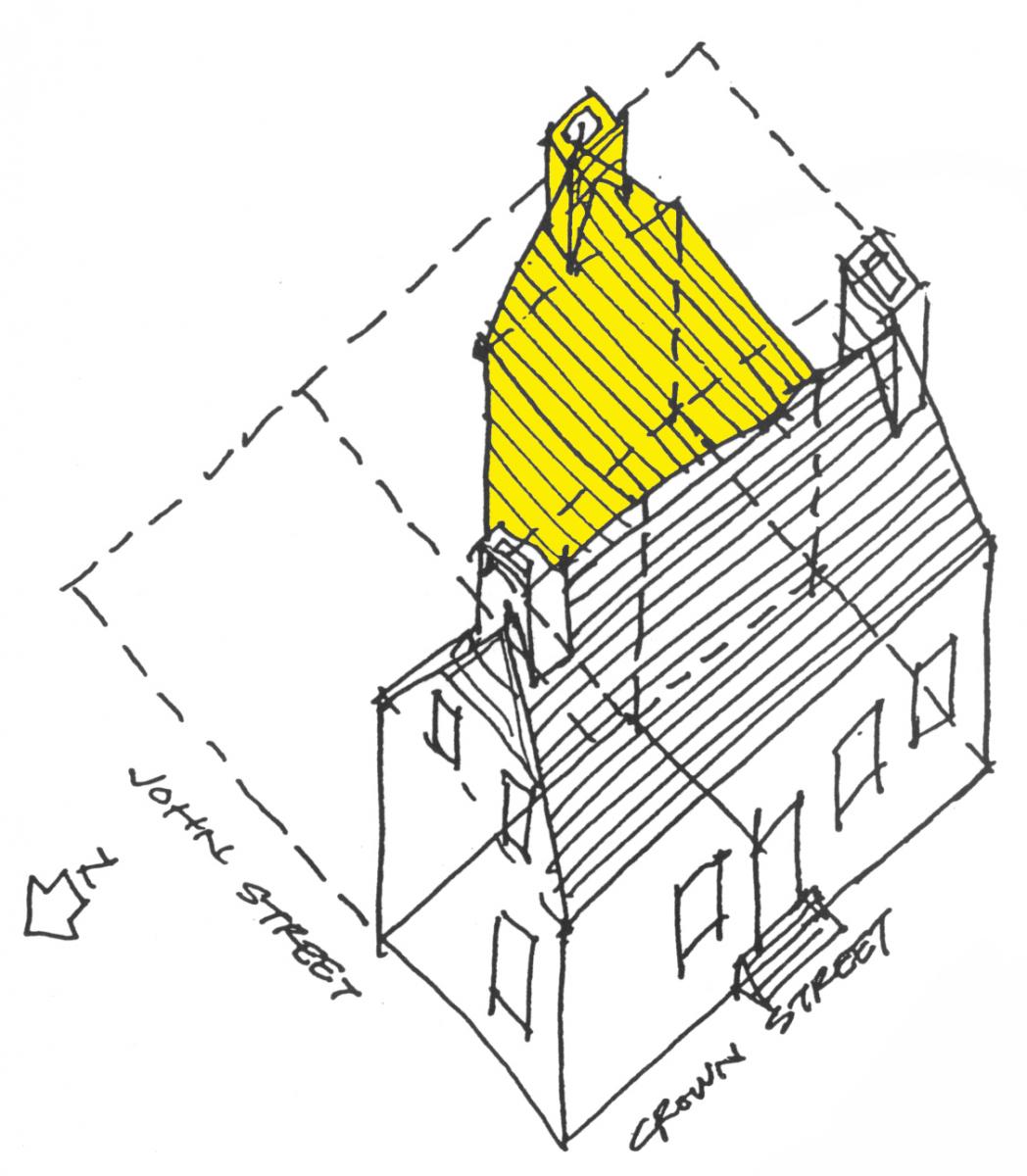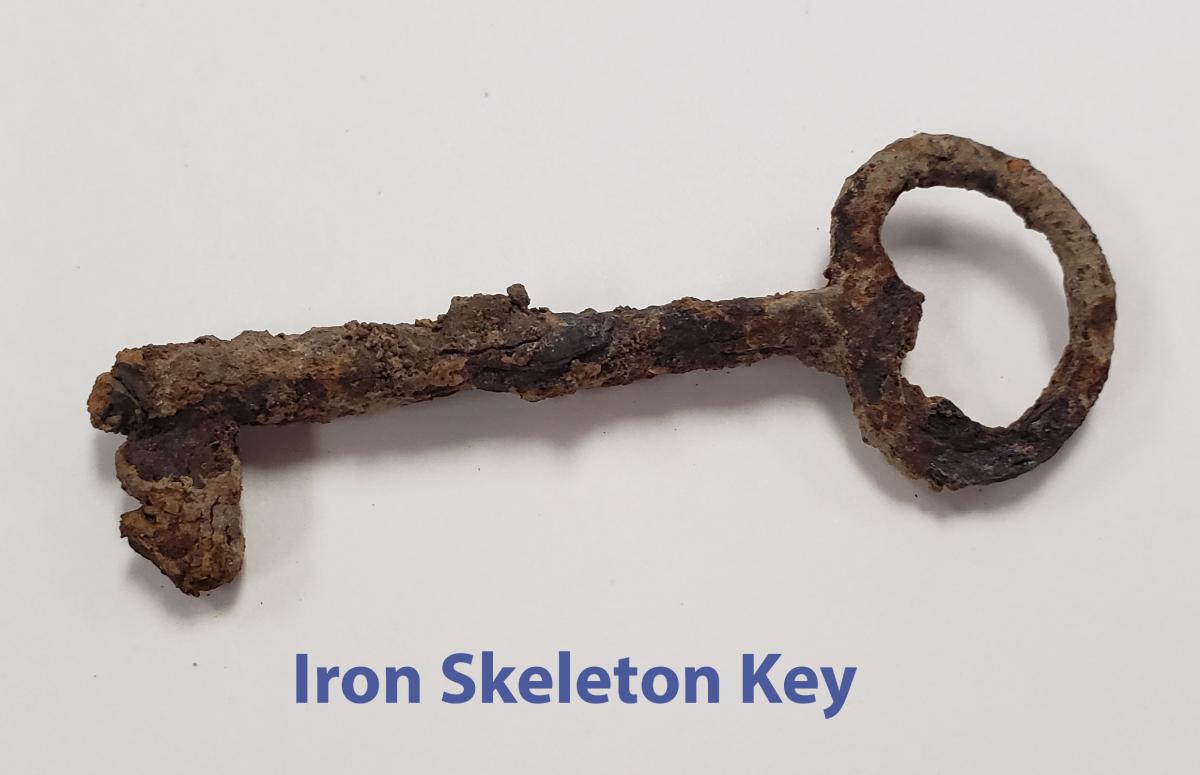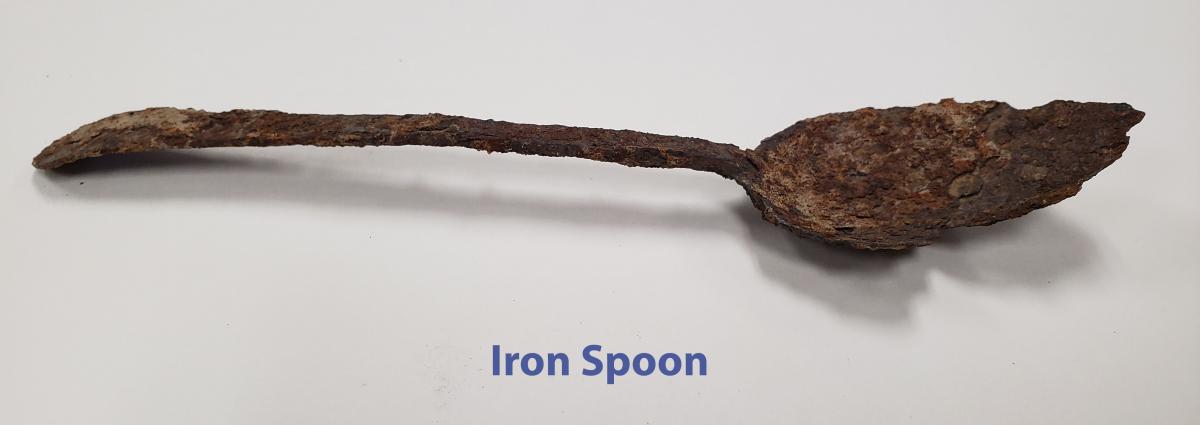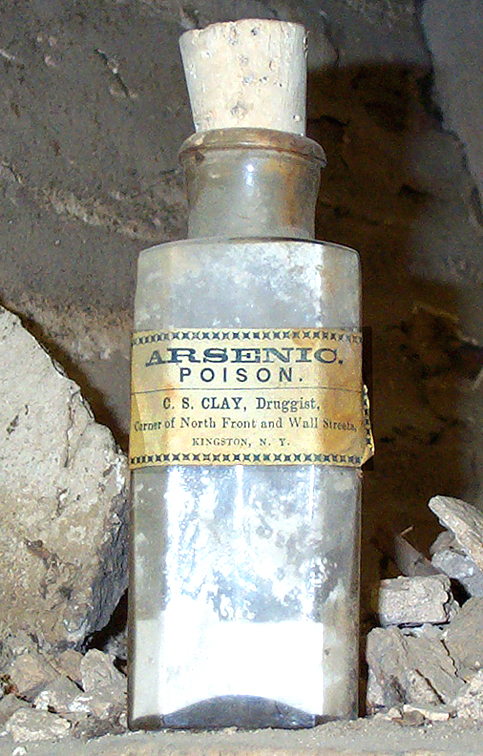<< Previous Room on the Tour - Phase 2 Downstairs
Learn More
Phase 3 (c.1698-1735) Downstairs

Persen House Artifacts

Over 20,000 artifacts were discovered during archaeological excavations at the Persen House during a project led by Joseph E. Diamond PhD on behalf of the County of Ulster Buildings and Grounds Department.
The excavations took place under the sidewalk on the west wall of the Phase 1 on Crown Street, under the sidewalk on the north wall of Phase 4 on John Street, and under the floor of Phase 3, the area presently covered by a temporary plywood floor.
Dr. Diamond’s report, entitled “Archeological Excavations at the Matthewis Persen House, KingstonNY” begins with a Management Summary. The following is an excerpt.
The excavations discussed here include 2 exterior units that were discussed in an earlier report (see Diamond 2001), as well as an additional 11 archaeological units and several shovel tests. Ten controlled excavation units inside the Phase 3 portion of the house have located intact strata that contain artifacts ranging from the Orient Phase at 300-1200 BC, to Dutch and English Colonial strata. Two very significant finds were the south curtain wall of the 1661 stockade, and the burn layer from the June 7, 1663 burning of Wildwyck. Artifacts relating to the Dutch Colonial strata include four cannonballs, gunflints, trade beads, wampum, a bodkin, various Dutch, German, French and English ceramics, glassware such as Roemer fragments, wineglasses, faunal remains, and architectural debris, not to mention significant quantities of shellfish. Early architectural elements include small red Dutch bricks, red earthenware pan tiles, turned lead, delft tiles, crown glass fragments and early nails. In total 12,001 artifacts and shellfish were found, which when added to the vertebrate fauna (8507) brings the number to 20,508 artifacts. (This does not include artifacts from 3 shovel tests and/or pieces found by workmen during construction.)
Several of the artifacts found are featured on this panel and other panels throughout the house. Other examples include:






Additional information:
- Kingston's Buried Treasures Lecture: "Our Buried Past: The Archaeological Treasures of Kingston by Archaeologist & Professor Joseph Diamond - July 18, 2014"
- Interview with Dr. Joseph Diamond, Associate Professor of Anthropology at SUNY New Paltz (2017)
Dutch Bricks & Dutch Jambless Fireplaces

Dutch bricks are a style of brick that originated in the Netherlands and have a distinctive set of characteristics that make them stand out from other types of bricks. One of the most noticeable features of Dutch bricks is their durability. These bricks are able to withstand the test of time, as evidenced by many Dutch Colonial buildings that are still standing today. Their thickness is also notable. These bricks are typically around 1.5 inches thick, which makes them ideal for construction purposes. They are strong enough to support the weight of a building, yet not so thick that they are cumbersome to work with.
This color is a natural result of the clay used in their production, which was commonly sourced from river banks and mixed with sand to provide a distinctive texture. Once the clay mixture was shaped into bricks, they were subjected to a rigorous six-week firing process in a kiln. This extended firing process is critical to the strength and durability of the bricks, as it causes the clay particles to fuse together and form a dense, sturdy material. Moreover, the firing process helps to remove any residual moisture from the bricks, which can lead to cracking or crumbling over time.
Most of the bricks used in New Netherland, which includes Dutch Colonial Kingston, were constructed locally. However, some were also imported from the Netherlands. Interestingly, the imported bricks were often used as ballast on ships. They would be carried in the bottom of the ship to provide weight and stability during the voyage. When the ships returned to the Netherlands, they would utilize trading goods for ballast in place of the bricks.
Dutch jambless fireplaces are a unique and interesting feature of colonial-era architecture. Unlike their English counterparts, these fireplaces do not have jambs, which makes them less efficient at throwing heat. However, the absence of jambs does provide a more open space to fit and maneuver cooking and food items, making them an ideal choice for kitchens. As the fire burned, a hearthstone would absorb and radiate heat, creating a warm and comfortable environment for cooking and socializing.
The hearthstone played an important role in jambless fireplaces, as it served as the foundation for the fire and protected the surrounding area from heat damage. The hearthstone was typically made from a durable material such as slate or stone and was often several inches thick. In addition to providing a surface on which to light the fire, the hearthstone also served as a practical area for cooking and preparing food. Another important function of the hearthstone was to prevent hot embers and ash from escaping the fireplace and potentially causing a fire. The thick stone material of the hearthstone was able to withstand the high temperatures of the fire and prevent damage to the surrounding area.
Additional Resources
- Bloodgood, J. (2021, February 5). Jambless Fireplace & Five-Plate Stove. Objects from the Historic Huguenot Street Collections. https://hhscollections.wordpress.com/2021/02/05/jambless-fireplace-five-plate-stove/
- Jean Hasbrouck House. Hasbrouck Family Association. https://www.hasbrouckfamily.org/historic-houses/jean-jacob-hasbrouck-house/
Arsenic
 Photo courtesy of the Marc Phelan
Photo courtesy of the Marc Phelan
The discovery of a bottle of medicinal arsenic during the reconstruction of this room is a fascinating glimpse into the medical practices of the past. The bottle, which was from the Pharmacy of C.S. Clay, Druggist, located at the corner of North Front and Wall Streets from around 1835 to 1855, provides insight into the types of medicines that were available during that time period.
Arsenic was a common ingredient in a variety of medicines throughout the nineteenth century, and was used to treat a range of ailments, including fevers, malaria, syphilis, asthma, and chorea. While it may seem strange to us today that a toxic substance like arsenic was used in medical treatments, it was believed to have therapeutic properties at the time.
In small doses, arsenic was believed to stimulate the immune system and improve overall health. It was also used topically in the treatment of skin conditions like eczema and psoriasis. However, the use of arsenic in medicine was not without risks. Overdoses or prolonged exposure to arsenic could lead to serious health problems, including organ damage, nerve damage, and even death.
Additional Resources
- Hughes, M. (2018, June 15). A Historical Perspective on the Dichotomy of Arsenic as a Poison and Medicinal Agent. EPA. https://cfpub.epa.gov/si/si_public_record_report.cfm?dirEntryId=341168&Lab=NHEERL
- Hughes, M. F., Beck, B. D., Chen, Y., Lewis, A. S., & Thomas, D. J. (2011, October). Arsenic Exposure and Toxicology: A Historical Perspective. Toxicological Sciences : An Official Journal of the Society of Toxicology. https://www.ncbi.nlm.nih.gov/pmc/articles/PMC3179678/

